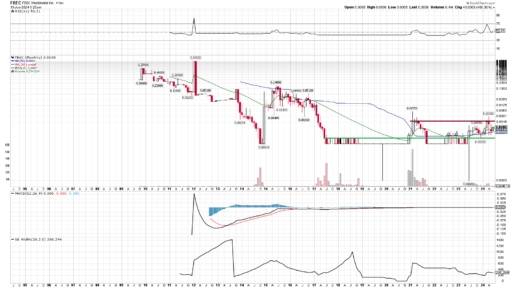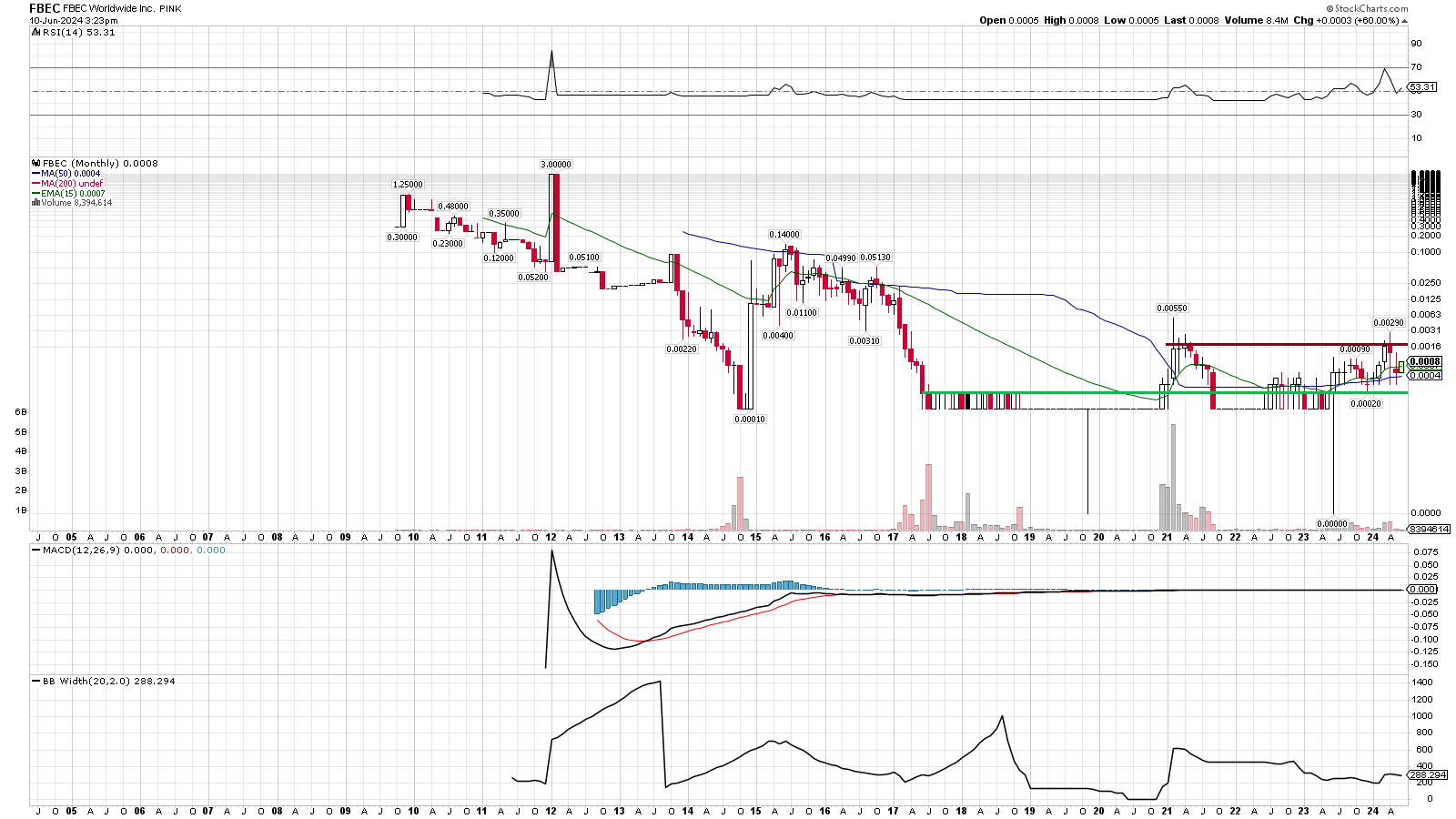The ideal scenario we’re looking for looks something like this. You have your clean shell with a strong secular bull trend on it’s chart and it finds suitable mergers and/or acquisitions and together the new management uses the shell as a vehicle to raise capital at a responsible rate and put it to good use, growing the company into a thriving entity and squeezing the shorts creating the ultimate Deep Fucking Value play. Then after a certain level of milestones and criteria are hit, they can uplist off of the OTC and trade on a higher exchange like the Nasdaq, where growth and raising capital become much more accessible.
The problem with many of these shells, including many of the charts with the nicest SET patterns, is that their share structures are currently at levels which make uplisting a problem. A $4 share price is a requirement for uplisting to the Nasdaq, so if the share structure on one of these shells is in the billions, it’s not reasonable to expect that getting to $4 is going to happen without reducing the outstanding shares.
My stance is that, if any of these shells are going to make the journey all the way from a shell on the OTC to a successful uplist onto a major exchange, the O/S is going to have to at some point get to a suitable range. A rough estimate would be about a 50 million to 100 million O/S is going to be the goldilocks zone, but that’s not set in stone and some easily could be smaller or larger than that.
Too large of an O/S means that the market cap would have to balloon in order to hit the $4 price requirement (making it less likely), however too low of an O/S will negatively effect the liquidity. We want to see an O/S that is large enough for ample liquidity but also small enough to make an organic path to $4 possible.
I hate to say it but at some point, almost all of the shells (with actual intentions of uplisting one day) with a billion+ share O/S will have to do a reverse split. Since the OTC market has been scarred by decades of CEOs doing reverse splits to help line their pockets, it’s not an easy feat to pull off. Many of these shell/mergers might opt to push their growth narrative first and build their company first and then time a reverse split with the eventual uplisting. If the company is executing well and has the retail market’s trust, then it’s possible there won’t be too much backlash as it will be tied to an uplisting. A modest reverse split timed with an uplisting is always more palatable than a split alone.
It’s possible that some of these shells may try to split first, clean up their share structure and then begin pushing their stock and growing the company. If I’m going to ride something out for the long haul, I’d much rather have the split out of the way first. Even if it’s tied to an uplisting, you just don’t like having that hanging over your head. The problem with doing it too early though is you risk losing support which means losing liquidity. That being said, if a company splits early into their journey and temporarily kills the sentiment for their shares, I absolutely think they can win it back by executing well after the split.
I don’t know how the shells with the bloated share structures will decide to handle that issue, but one way or the other if their intention truly is to uplist, then the O/S needs to be addressed. It’s possible a very small few can cancel shares or otherwise remove shares from the O/S to get there, but most likely the bloated share structure issues will end up having to be settled with a split. This may actually create some wonderful buying opportunities for the initiated if you see a SET play with a strong chart and an intriguing narrative you really like and they decide to do a split early on. The short term selloff may be a good time to enter for the potential trek towards an uplist.
The other thing to consider is that some of these #OTCSET plays already have outstanding share counts in the goldilocks zone, so those have to be looked at as being a cut above the rest in that regard.
If the intention is to find, catch, and ride a shell from the OTC to a successful uplisting, the share structure has to be an aspect to consider and factor in. Reverse splits are historically a dirty phrase in the OTC, but the Special Event Theory spells out a potential paradigm shift of sorts and as such we need to be open minded to rethinking how we’ve always viewed some things.

